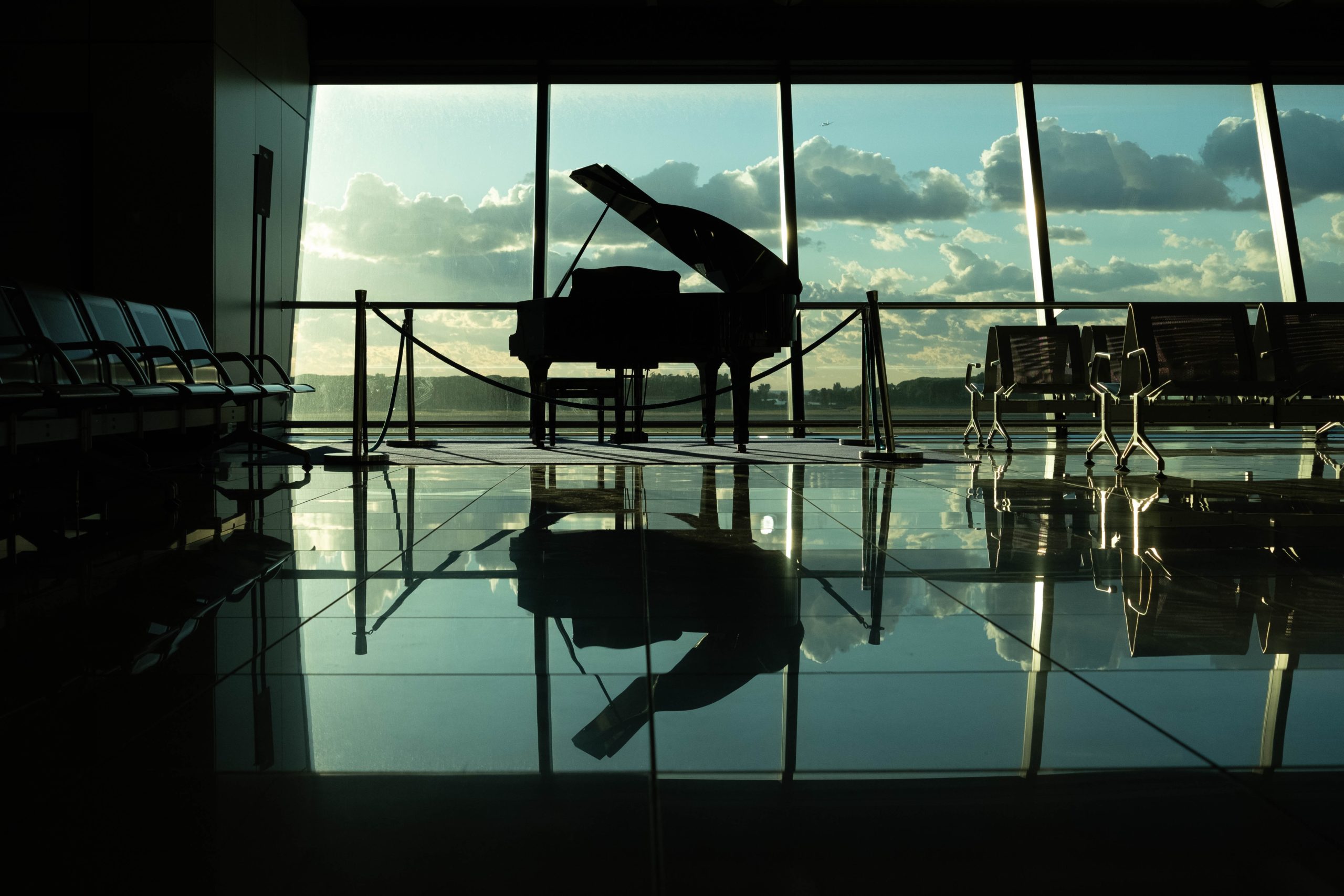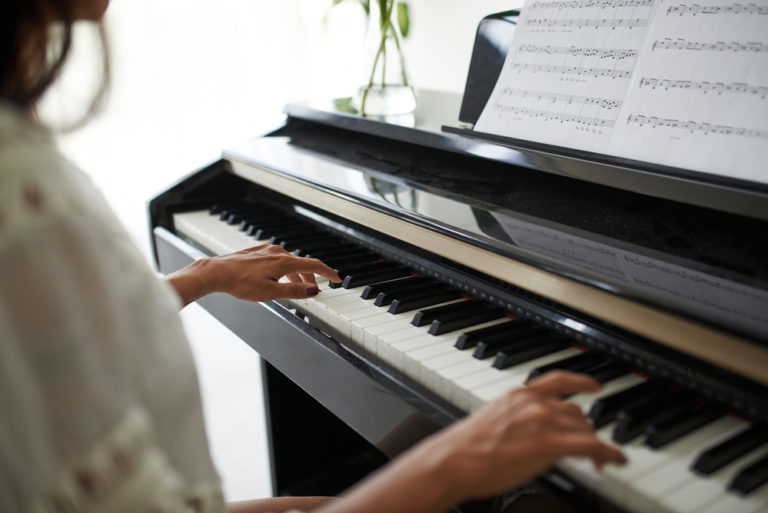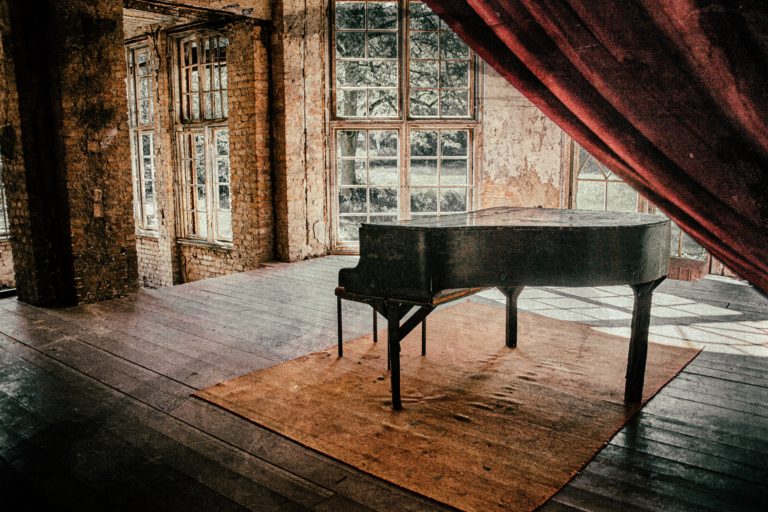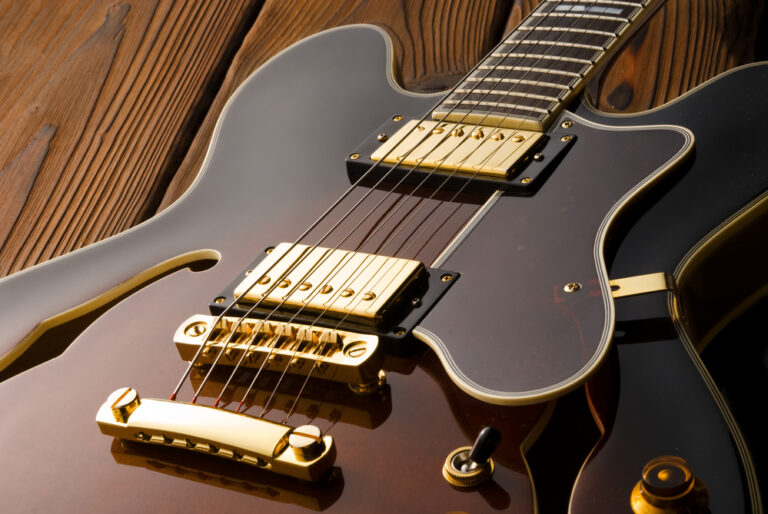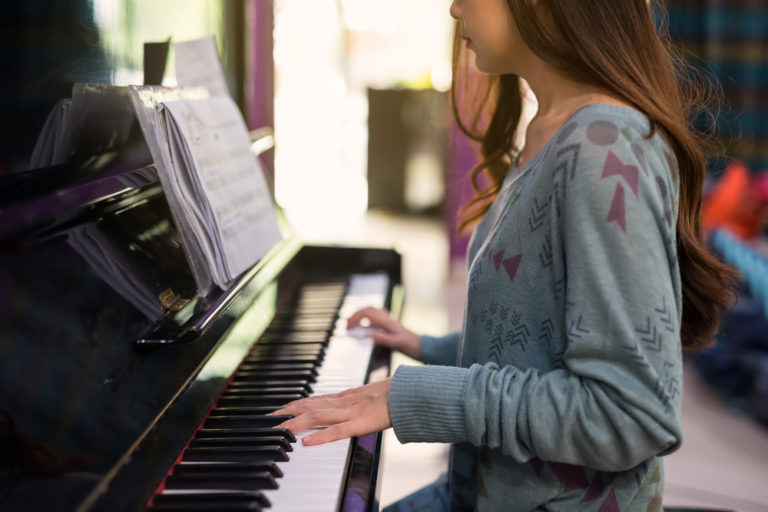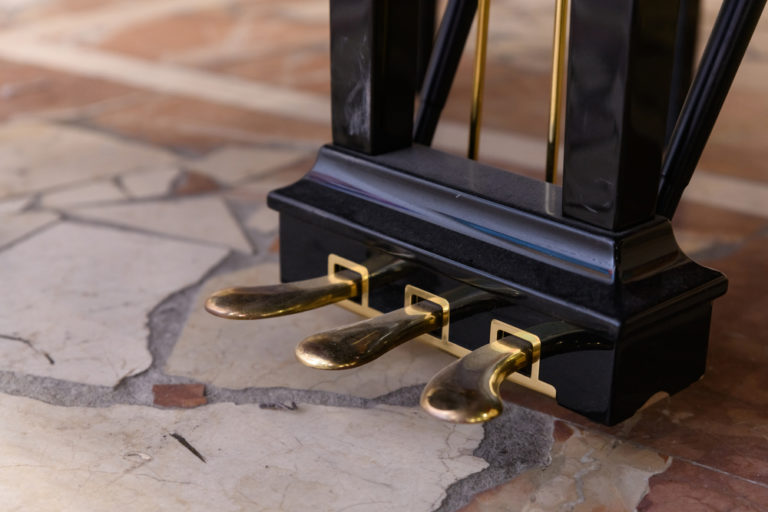17 Types of Pianos Explained (2024)
There are so many types of pianos out there, each varying in shape and size, sound, and other features, that it becomes a difficult and strenuous task to pick one out. From uprights to grands to digitals, electronics and electrics, let’s see what type of piano might suit you.
Acoustic vs. digital piano
Let’s start off slowly. There are two major types of piano, acoustic and electric. Each of these categories has different kinds of pianos in their ranks, so let’s see what they are all about (1).
Acoustic
There are different kinds of acoustic pianos. Grand, square, upright, and so on. The regular piano, aka the grand, has a frame and strings which traverse and extend horizontally, and thus takes more space because of its bigger body.
With the upright, you have strings and a frame that runs vertically and thus you will commonly find them in houses or apartments. The strings of the vertical piano, however, are quite prone to wear and tear.
Digital
This is the modern version of the acoustic piano. With no hammers or strings, this type of piano produces sound digitally when a key is pressed.
It is more expensive and only offered by certain manufacturers. Much like the acoustic counterpart, the upright digital is used in homes, with the portable piano being the lightest of the 3, coming with a stand, some legs, and the keys and exterior are usually made from plastic. You can expect to view a large piano even when it comes to its digital form.
Upright (vertical)
There are many types of upright pianos: spinet, console, studio, and upright.
All of these are compact versions of the normal grand piano and take up less room in the household and are more likely to be found in apartments and homes (2).
Verticals with unusually tall frames and long strings were/are marketed as upright grand pianos, but that label can be very misleading.
In the modern age, these uprights are used in churches, schools, music conservatories, and university music programs for rehearsal and practice as they provide the sounds of a grand in a very small package, and even if used in a smaller room, it won’t take as much space as a traditional piano.
Spinet
A smaller type of harpsichord, piano, or organ.
A spinet piano (1930 – present), is the smaller and cheaper version of the normal grand or upright piano. Their defining characteristic was the drop action which did not engage the action directly, but used rods called stickers to be pulled upward on levers which then engaged the action.
It is also called in some circles “the bane of piano technicians” as they are difficult to service because of the ordeal of the removal of the action. There are some brands that make these pianos such as:
- Baldwin – sold under Acrosonic
- Gulbransen
Size: ~38 in height, ~58 in width
Learning difficulty: for beginners – domestic instruments.
What it offers: weaker sound, smaller soundboard
Console
When it comes to consoles, they have a compact action, with shorter hammers than the full-size upright, with the action above the keys.
The action of the console is vertical, rather than horizontal like in the grand piano, and works against gravity and has less sound than a grand, but of the same quality, but they are the most cost-effective, take up less space in the household, and are the best for beginners and recreational piano players.
Playing better than a spinet, they are a few inches shorter than the studio pianos. It is the second smallest piano type, larger than the spinet but smaller than a studio. Here are some brands that make them:
- Yamaha
- Baldwin
- Young Chang
- Kohler & Campbell
- Hallet Davis
Size: ~40-44 in tall
Learning difficulty: for beginners
What it offers: plays better than a spinet
Studio
The studio vertical piano is the 3rd shortest cabinet which can contain a full-sized action above the keyboard. Anything taller than this is called an upright, but that is reserved for the full-size models talked about earlier.
Having a larger soundboard and longer strings, it gives out a good quality tone and richness to the notes which rivals the sound of a full-size grand piano. These types of pianos are suited for both beginners and even professional players.
Size: ~42-45 in tall
Learning difficulty: for beginners and intermediate players.
What it offers: full-sized action above the keyboard, a good quality sound which rivals that of a grand piano.
Professional (upright)
The upright or vertical piano is the tallest piano, having a height from ~50 to ~60 inches, and 58 inches in width, with a rich tone and victor of the test of time as a tough piano.
Its sound keeps strong over the course of many years, with proper maintenance, mind you.
Being more compact due to their vertical structure, they took up less space compared to a grand piano; thus it is great to have in private homes for practice and composing.
The hammers of the upright are susceptible to degradation as they return to their normal position with the help of springs.
Size: full-size / ~50+ in tall
Learning difficulty: For beginners
What it offers: clean sound, quality piano strings, etc.
Grand (horizontal)
The grand piano is the direct descendant of the harpsichord, having a horizontal body, strings that extend away from the keyboard, and use gravity as the means to return to a resting/normal state (3).
There are 3 types of grand pianos: parlor piano, aka parlor grand or boudoir grand, the baby grand piano size, and the regular concert grand piano, which spans between 7’3” and 9’10”.
But all of these are equals with these characteristics, they all have larger and richer sound and string inharmonicity – the degree to which the overtone frequencies (AKA partials or harmonics) sound sharp in relativity to whole multiples of the fundamental/root frequency.
Petite Grand
The smallest of the horizontal piano types, it produces a powerful sound that impresses musicians.
Ranging from 4’5” to 4’10”, even though all grands have the same width, the petite offers an economy of space at the expenditure of sound.
With smaller soundboards and the small body case size, the petite is not capable of the sounds available to the larger grands, but they do have something called double escapement action.
Most models have 88 keys (7 octaves + 3 lower notes)/ sometimes 85 and two pedals (Europe) and American pianos have 3 pedals, una corda, sostenuto, and damper.
Size: 4ft 5in – 4ft 10in
Learning difficulty: for beginner
What it offers: clean, but lesser sound due to smaller soundboard and body case, the economy of space
Baby grand
Crafted by Steinway & Sons in 1905, the world’s first baby grand was the Model A.
The modern baby grand can perform as well as the first one from 116 years ago, and a fun fact is that we now call the 6’ baby a recital grand, and looking both to the future and the past, we can see that the 7’ pianos can outperform the 9’ pianos of the past.
Steinway & Sons’ baby grand pianos are overstrung, with ribs made of sugar pine, blued steel tuning pins, and ruse-resistant heads. The hammers are made of wool felt and underfelt and are treated to resist insect bites and moisture.
Size: 4ft 11” – 6ft
Learning difficulty: For beginners
What it offers: high-quality sound
Medium grand
The middle child between baby and concert-style grands. A professional instrument found in most music conservatories the world over, with a better-quality sound than that of a baby grand.
Measuring 5’8”, it is considered the most popular household grand size, small enough to comfortably fit into any homely environment, but large enough to have a depth of tone.
Due to the decrease in room size and the appearance of flats, lead to the need for different sizes. Some known medium grands are the Yamaha C3, the Steinway M, and Kawai 550.
Size: 5’8”
Learning difficulty: For professionals
What it offers: quality sound
Parlor grand
The parlor grand piano, or the “living room grand” is the smallest of concert grand pianos with sizes ranging from 5’9” to 6′ 9” and realizes the potential for a deep bass sound, one of the defining characteristics of the concert grand pianos.
They are found in recital halls, recording studios, and large living rooms. They have a large size but are not overwhelmingly big and they have a degree of playability that some concert grands totally lack, capturing the many benefits of the concert grand in a smaller package and are easier to play.
Size: ~6’-7’
Learning difficulty: For beginners and intermediates
What it offers: benefits of the concert grand in a small package
Ballroom Grand
The ballroom or semi-concert grand piano is a slightly larger piano than the parlor and fits into mid-sized and large-sized venues such as concert halls and ballrooms.
This is one of the models most people see when going to piano concertos, be it a ballroom grand or a Concert grand which can span over 9 feet in length.
Utilized by recording studios for the balanced power and depth of tone without the displacement of the full concert grand, but even so with the size it still averages around 900 pounds in weight.
Size: 6’2” – 6’7”
Learning difficulty: for beginners and intermediates
What it offers: quality sound, quality strings
Also read: Music Streaming Statistics (US & Global Data)
Concert grand
Different pianos exist, however, this variant is a majestic musical instrument, having 7 to 9’ in length, overwhelming in size and sound, it is the weapon of choice for the world’s greatest pianists, with the highest quality of sound and musical expression (4).
The term is used quite loosely by the audience to describe concert-level pianos that they own, but those pianos may be either a baby grand, parlor grand, or ballroom grand, or medium grand.
With braces made of solid spruce wood which provides tensile strength at the expense of weight (but it can still weigh more than 1000 pounds), ribs made out of sugar pine for the constant support, hammers out of the wool top, and underfelt, treated to resist insects and moisture.
Size: ~7-9’
Learning difficulty: For Professionals
What it offers: cleanest and most quality sound and materials used in its construction.
Electric, Electronic, and Digital
A piano-type instrument was devised to produce the timbre and sound of an acoustic piano. Wurlitzer was the first to coin the term “Electronic piano” for their electric piano line produced from the 50s until the 80s.
Working akin to analog synths (electronic pianos – generating tones through oscillators), electric pianos are more mechanical, using a pickup and amplifier.
The first electronic pianos were made in Italy in the 1970s and there was some competition from Japan and some were made by RMI in the US from 1967 to 1980 and they were used by bands such as Genesis, Yes, Deep Purple, and others.
Electric piano
Invented by Harold Rhodes, an instrument that became popular during the 70s. Using hammers, keys just like a traditional piano, and thin metal tines instead of strings to produce the sound, which is then picked up by an electromagnetic pickup and sent through an amplifier and speaker (5).
Laid out like a traditional piano, but sometimes using 73 keys instead of 88.
The thin rods, called tines, are connected to a tone bar which acts as a tuning fork and also extends the vibrations of the strips, and opposite the tines sits a pickup that induces an electric current, similar to the electric guitar.
Size: full size, 73 keys
Learning difficulty: For beginners
What it offers: “bell” sound, mellow timbre
Electronic piano
Produced in 1979 and patented in ’81, the electronic piano had the first full touch-sensitive keyboard and pedals, influencing different styles of pianos that would come.
They became available in the 80s when the digital piano and the polyphonic synthesizer were more affordable for recording studios and home use, as a smaller and lighter solution to the traditional acoustic piano.
Generally, in the modern age, “electronic piano” is used as a reference to a digital or stage piano and is somewhat of a misnomer as they use synthesis to generate sounds and digitals use samples as synthesis, and a fun fact is that starting in 1985 they were often referred to as the Personal Electronic Piano.
Size: N/A
Learning difficulty: For intermediates and professionals
What it offers: sample synthesis or analog synthesis
Digital piano
Invented by Yamaha in 1983, the Clavinova is a premium digital piano. Similar to an acoustic piano, but has the ability to save and load songs, the availability of different voices, able to connect to a computer via USB or Wi-Fi.
They have progressively weighted keys or “graded” hammers which vary in weight and have been named and renamed over the years (6).
They say that it feels just like a grand piano and that this is the result of the skills and instincts developed by Yamaha through their long years of service with the help of cutting-edge tech and different piano types.
Size: full size
Learning difficulty: For beginners, intermediates, and professionals
What it offers: quality Yamaha sound, sparkling treble, and powerful bass.
Keyboard
Portable kinds of pianos are derivatives of acoustic keyboard instruments, like the grands and uprights.
These may refer to synths, digital pianos, stage pianos, electronic organs, and DAWs. These are built with a low-watt amp and speakers as they are synthesizers
They are accomplished in recreating a wide range of instrument sounds and samples (violins, pianos, organs, etc.) and synth tones such as the saw wave, a sine wave, square wave, etc (7).
These are usually designed for and found in homes of beginners, having an unweighted key which is so velocity-sensitive (meaning that they only produce one sound meaning that even if you press lightly the sound produced will have the same velocity)
Size: 2 octave – full-size, 88 keys
Learning difficulty: For beginners
What it offers: a variety of sounds
Hybrid and specialized
Usually, when you say hybrid in terms of musical instruments, you usually think about something that is both acoustic and electric, sort of like an electro-acoustic guitar or a hybrid drum kit, which uses both acoustic drums and electronic drum pads (i.e. Danny Carey of Tool’s drum kit or Terry Bozzio’s, etc.)
Well, two of these different styles of pianos are the pianola or player piano and the silent piano. One uses tines or thin metal strips and pickups while one uses dampeners and can connect to a sound module or DAW to produce MIDI notes and information.
The toy piano (kinderklavier)
A small piano-style musical instrument, using metal rods instead of strings to produce sound. It was made famous by composer John Cage who dedicated a composition called “Suite for Toy Piano”.
Early toy pianos used glass bars to produce sound, but the son of German toymakers, Albert Schoenhut, put metal soundbars to make the instrument more durable.
Starting with the 1950s, a company in Burlington, NJ, created the PianoLodeon, a toy piano that had a mechanism that was quite similar to the player piano.
In the year 2000, an annual Toy Piano festival was launched in San Diego at the University of California, where a collection of toy pianos, recordings, and live performances are presented and new works are written
Size: 1-3 octaves
Learning difficulty: For children
What it offers: metal or glass sound rods, Quarter tones between E/F. B/C
Player piano
The pianola is a self-playing piano, using a pneumatic or electro-mechanical mechanism that operates the piano action via perforated paper or metallic rolls.
Having one of the most high-profile ad campaigns ever and using full-page colored advertisements (~$7700 in modern US dollars in 2019).
There are many different styles of pianos such as the split stack control which uses pneumatic mechanisms, theme control, where a peripheral pneumatic hardware system is used in conjunction with special rolls.
Reproducing pianos, which are also seen in most Disney and WarnerBros cartoons, are fully automated versions of the player pianos and have no need for manual control to produce the illusion of a live performance.
Size: 48” in height and 58” in width
Learning difficulty: for intermediates and professionals
What it offers: entertainment for audiences, special music rolls of paper or metal
Silent piano
A silent piano is an acoustic piano where you have an option to have a silent private practice, the mode in which sensors pick up the movement of the keys and convert it into MIDI signals that can be sent to a sound module or a DAW.
In all silent pianos, the silent function engages a bar to move into place to intercept the hammers and stop them from hitting the strings.
Older silent piano mechanisms detected key movement by mechanical sensors, while the modern ones use optical sensors that don’t affect the feel of the sound.
Size: N/A
Learning difficulty: For beginners and intermediates.
What it offers: Silent practice, optical sensors.
FAQ
How many types of pianos are there?
There are 3 different types of pianos: Upright (Spinet, console, Studio, professional), Grand (Petite, Medium, Parlor, Ballroom Concert), Electric, Electronic and Digital.
What is a studio piano?
Similar to a console piano, studio pianos have a different feel and location of the action. They can contain a full-sized action above the keyboard. Anything taller than this is called an upright.
What is an upright piano?
Upright pianos are compact versions of the normal grand piano which take up less room in the household and more likely to be found in apartments and homes.
What are the different types of upright pianos?
The different types of vertical piano are Spinets, consoles, studios, and professionals. They all have their different usage and playing difficulty.
What type of piano is the best?
The best kinds of pianos are the concert grand and the professional upright, which have all the qualities needed to be a performance instrument.
What are the 3 types of pianos?
The upright, the grand, and the electric, electronic or digital. All have subtypes, spinet, console, for the upright, baby grand, petite grand, for the grand and synths, keyboards, silent pianos, for the electric, electronic and digital pianos.
What are the small pianos called?
A small piano is called a spinet, the smaller, cheaper version of the normal grand or upright piano. It is called in some circles “the bane of piano technicians” as they are difficult to service because of the ordeal of the removal of the action.
What are the big pianos called?
Big pianos are called grands, the direct descendant of the harpsichord, having a horizontal body, strings that extend away from the keyboard, and use gravity as the means to return to a resting/normal state.

